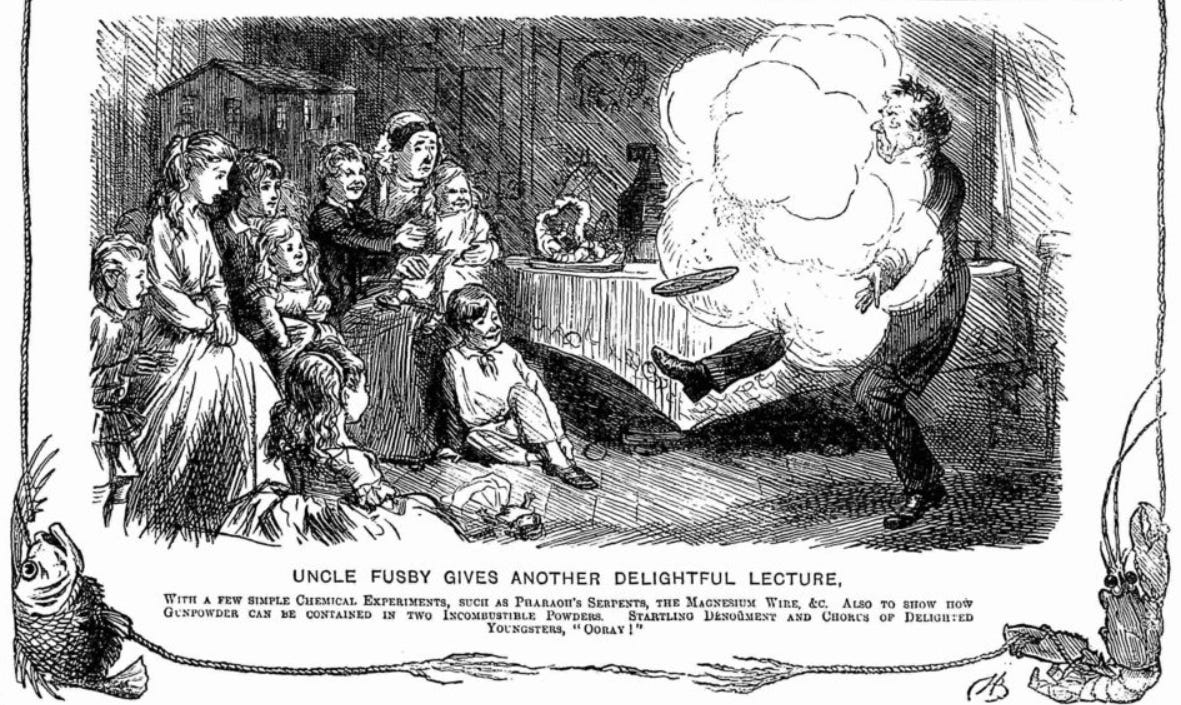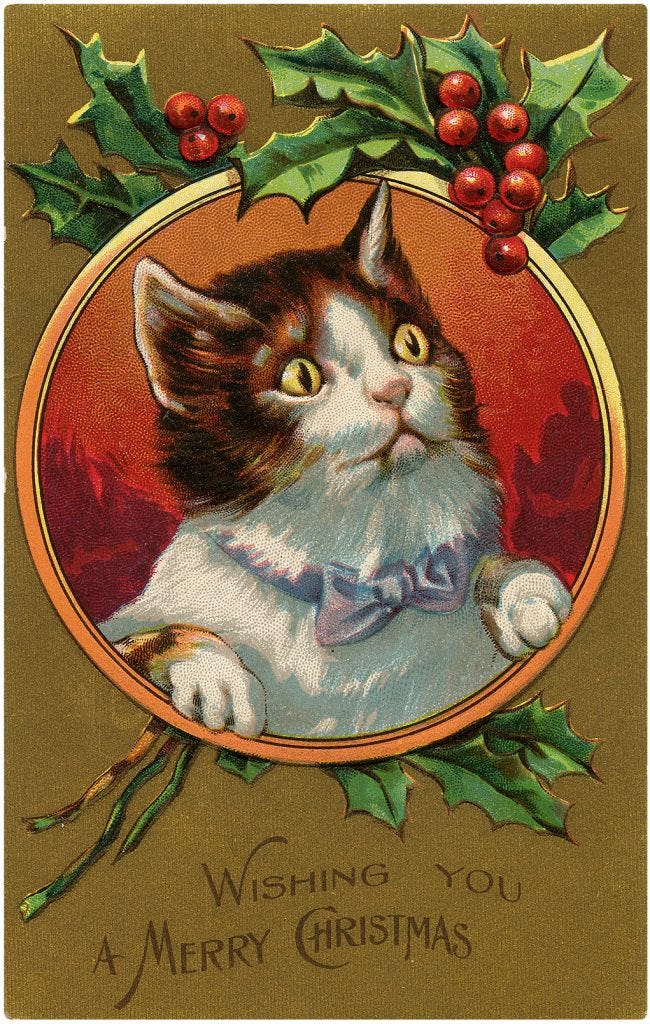'Set the spirit alight': Victorian festive science
Scientific experiments of a more or less dangerous character provided Christmas entertainment in the Victorian parlour
Welcome to The Quack Doctor, a weekly publication that unearths stories from the history of medicine and related themes.
It’s free to subscribe, but if you would like to make a one-off contribution to the coffee supplies that keep me going, please go to my Ko-fi page here. Thank you!
Ah, Christmas! A time for peace, goodwill, and setting fire to chemicals. Now that the festive season is upon us, I offer you a selection of scientific amusements recommended by Victorian newspapers for the entertainment of party guests – although I would caution you not to try them at home.
Science and Christmas might not have an obvious link, but as interest in both phenomena blossomed during the early Victorian era, they became intertwined. From pantomimes with astounding chemical special effects to the Royal Institution’s famous Christmas lectures, science enhanced the wonder, discovery and fun of the season.
Revelers did not, however, have to go to the theatre or the lecture hall to find scientific entertainment – there were plenty of parlour tricks with which to amuse (or terrify) the family at home. I hope you enjoy reading them.
I am taking a couple of weeks off from posting but will be back in January with more historical curiosities and gruesome stories. Have a lovely time over the holidays and thank you for reading and sharing The Quack Doctor over the past year!
The fiery mask
Into a bottle containing one ounce of sweet oil, put a drachm of phosphorus; let it stand a few days, and it will be fit for use. If a sponge dipped into this liquid be passed lightly over the face, it will present an awful appearance in the dark. This is a harmless experiment if used carefully, and will not fail to create a great deal of merriment. This preparation is also called the ‘Luminous Bottle.’ If the stopper be removed, it emits a light sufficient to discern the figures on a watch.1
To blow an egg from one wineglass to another
Place an egg in a wineglass, the thicker end downwards. Then put an empty wineglass immediately in front of the other glass. The trick is to blow the egg from the one glass into the other. It is easily done, at least after a little practice.
The lips should be placed close to the rim of the glass containing the egg. Then the experimenter should blow strongly and sharply, directing the air, as far as possible, between the egg and the side of the glass. The egg, if the experiment is well done, will jump out of one glass into the other.
It is wise to use a hard-boiled egg for this experiment.2
To render hideous the faces of all the company
Dissolve some salt and saffron in some spirits of wine; dip a little tow in it, and set fire to it. At this light, those who are of a fair complexion will appear green, and the red of the lips and cheeks will turn to a deep olive colour.3
A self-peeling banana
When dessert is served, much interest can be excited by the following simple trick. Challenge your friends to peel a banana without touching it. Naturally, they will consider such a feat impossible, and you will then proceed to show them how easy it is. Procure a bottle with a neck about the thickness of a banana, and drop into it some alcoholic spirit. Set the spirit alight, and, while it is burning, place in the neck of the bottle the smaller end of a banana, on which you have secretly made four longitudinal incisions. To the utter amazement of the company, the banana will gradually disappear into the bottle, shedding its skin as the invisible force drags it down. The trick is performed by purely natural means. The fire in the bottle produces a partial vacuum, and the outside atmosphere presses the fruit into the empty space.4
A fiery fountain
If twenty grains of phosphorus, cut very small, and mixed with forty grains of powdered zinc, be put into half an ounce of water, and two drachms of concentrated sulphuric acid be added thereto, bubbles of inflamed phosphorated hydrogen gas will quickly cover the whole surface of the fluid in succession, forming a complete fountain of fire.5
Experiment with a pipe
Compose a powder with one ounce of saltpetre, one ounce of cream of tartar, and one ounce of sulphur, pulverised singly, then mixed. Put a single grain of this powder into a tobacco-pipe, and when it takes fire, it will produce a very loud report without breaking the pipe.6
The exploding bubble
If you take up a small quantity of melted glass with a tube (the bowl of a common tobacco-pipe will do), and let a drop fall into a vessel of water, it will chill and condense with a fine spiral tail, which being broken, the whole substance will burst with a loud explosion, with injury either to the party that holds it, or him that breaks it; but if the thick end be struck, even with a hammer, it will not break.7
The wonderful bottle that pours forth alternately wine and fire
Get a tinsmith to make you a trick bottle, that is, a double bottle, or bottle containing a smaller bottle inside. The outer compartment must be made to contain wine or any other liquor; in the inner compartment there must be a hole from the neck to the bottom of the bottle. Procure a table in which is a hole of exactly the same size as the one in the bottle. Show the bottle to the assembled company, and offer them some wine; pour it out, and then place the bottle over the hole in the table. Your confederate, who is concealed under the table, then thrusts a squib through the hole in the table into the bottle. You set fire to it, apparently accidentally, and as soon as the fire has ceased to shower, and while it is yet smoking, take up the bottle again and pour out more wine. Well executed, this is one of the best tricks ever invented.8
Electricity of the cat
Place your left hand upon the throat of the cat, and, with the middle finger and the thumb, press slightly the bones of the animal's shoulders; then, if the right hand be gently passed along the back, perceptible shocks of electricity will be felt in the left hand. Shocks may also be obtained by touching the tips of the ears after rubbing the back. If the colour of the cat be black, and the experiment be made in a dark room, the electric sparks may be very plainly seen.
It is, perhaps, unnecessary to add, that, in order to this experiment being conveniently performed, the experimenter must be on good terms with the cat.9









